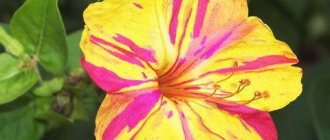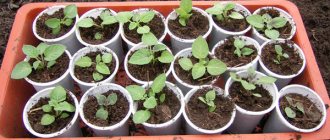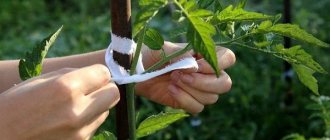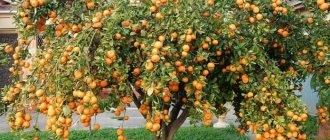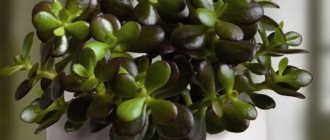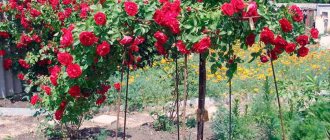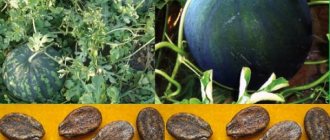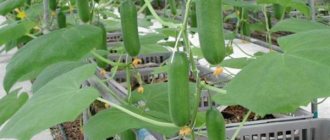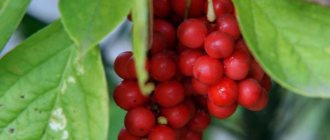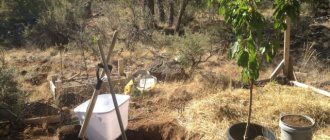How to choose a landing site?
First of all, you should inspect your site to identify a flat clearing, well open to sunlight and protected from the effects of winds.
Reduced relief contributes to the stagnation of cold masses , which can have a bad effect on the development of the roots of the seedling in the soil and the preparation of the plant for wintering. A high degree of soil moisture in some areas also does not contribute to the normal development of acacia. If you choose a place inaccessible to strong winds, you can ensure the integrity of the crown and spring buds.
In addition to climatic factors, the love of bees for honey plants should also be taken into account. In this regard, you should not plant acacia in the place where the playground is laid out. You should not place it near fruit trees. The acacia root system is so strong that it can suppress the nearby roots of neighboring plants.
How to get rid of root growth
Young acacia trees can also cause a lot of trouble. If the plans do not include the total destruction of all bushes, it is better to get rid of it the old fashioned way. That is, dig it out every year. In this way, you can form a hedge of young plants, removing them only where they are not needed.
Otherwise, you can use herbicides such as Roundup, Tornado, Glyphos. Their manufacturers guarantee complete removal of woody vegetation, provided that the rules of use are followed.
Treatment with herbicides is best carried out in the spring, after the leaves bloom, in sunny, windless weather. The result does not appear immediately; the death of young shoots occurs gradually, over 1-2 months. One of the simplest and cheapest ways is to water the young animals with gasoline or diesel fuel.
All articles about acacia on the site can be read by following this link...
So, those who want to plant acacia on their site can take note: the growth and development of the plant must be controlled. Left unchecked, it is one of the most aggressive trees and a nasty weed.
Light - thermal mode
At its core, acacia is considered a southern plant, so a large amount of light and solar heat will only benefit it. However, during drought, young seedlings should be watered. This is required for better rooting of future trees. In the first three years, you need to help the plant prepare for winter. To do this, it is necessary to insulate its roots using a layer of peat or fallen leaves. The thickness of the shelter must be at least 10 centimeters.
To create an optimal thermal regime, you can also wrap the plant trunk with regular burlap.
How to recognize the plant robinia pseudoacacia
Key varietal characteristics manifest themselves in a special way during the flowering period, although due to some morphological differences, the crop is easy to recognize at any other time of the year.
- The tree is characterized by medium growth vigor and a standard trunk, which is covered with smooth dark brown bark;
- As it grows, it becomes overgrown with basal shoots, which forces amateur gardeners to carry out regular pruning. If they are absent, the plant will quickly become too thick and lose its decorative effect;
- Vegetative and generative buds are pressed tightly against the shoots. They can be distinguished by size and shape. Representatives of the generative group are larger and rounder;
- The culture has odd-pinnate leaves, which consist of 13-20 oval leaflets with bright green tones. There is a grayish tint on the reverse side, and sticky hairs completely envelop the long petioles. The plant is deciduous, although the rich green tones remain on the leaves until late autumn. Very often the foliage falls, retaining its original color;
- Large-sized flowers form erect, dense inflorescences. Moreover, they all have a complex shape, which is inherent in all representatives of the legume family. Only heavy pollinators, including bees, bumblebees, and sometimes birds, can pollinate the crop. To attract similar “guests” to itself, robinia pseudoacacia does not use aroma, because it is not strong enough, namely the color of the inflorescences, using all possible shades. During the flowering period, the plant looks very lush and amazing;
- As it develops, sticky fruits with seeds appear on the tree, of which there can be up to ten pieces in one hard shell of a sticky pod. Seeds can maintain excellent germination for 10 years. Ripening occurs in November, while they hang freely on the tree throughout the winter.
Science has proven that black locust has all the beneficial properties of the white variety. Very often, highly effective antipyretic and anti-inflammatory drugs, diuretics, and distracting rubs are created on its basis in the fight against neuralgia and radiculitis. Also, with the help of Robinia pseudoacacia, gastritis and chronic manifestations of peptic ulcers are treated. Robinia pseudoacacia essential oils are used to create excellent cosmetic preparations that are in demand in many countries around the world. The plant has found application in both folk and official medicine.
Soil for acacia
Lightness and looseness are the main characteristics that a soil mixture for planting acacia should have. If the summer cottage is located on poor, sandy soil, the plant itself will enrich it with nitrogen. If the soil is dense, clayey, on which young acacia seedlings are supposed to be planted, you should thoroughly loosen a small piece of soil with a shovel. In this case, drainage should be arranged from a 15-centimeter layer of crushed stone. For the soil mixture, turf soil and compost are taken, into which sand is mixed. This composition is mixed in a ratio of 6:4:4 with a pre-selected top layer of soil.
Bush acacia - full description
The bush grows at home up to five meters, and occasionally can reach fifteen meters in height. Its root system is very durable and strong, but grows on top of the soil. This is what causes the death of acacia during the slightest frost. The tree reproduces by root shoots in the fall.
The trunk is long and smooth, thick, and due to climate change, the thickness is rarely more than half a meter, although many years ago it reached eighty centimeters. The flowers resemble a panicle with fluff; they are cream-colored with purple tips. The fruits of the plant are large, represented by bean pods twenty centimeters in length. The leaves are compound, consisting of fifteen openwork leaves of a green hue. The stem of the flower is short and thick, the crown is large, branched and spreading.
Habitats
There is a version that acacia comes from Australia and tropical Africa. Another version says that the Azerbaijani city of Lankarat is the birthplace of the plant. But, besides this, the culture is widespread in Mexico, India, China, Argentina and even on the island of Madagascar. It can often be found blooming on the Black Sea coast in Crimea, in the Caucasus Mountains, Moldova, Ukraine and some countries of the European part of Eurasia.
How to plant acacia seeds - step-by-step instructions
Acacia seeds can be purchased at a specialty store, or you can collect mature beans yourself in late autumn.
Before sowing, which should be done in the third decade of March or early April, the seed should be stored in the refrigerator. Due to the dense bean skin, the seeds will not germinate in such a storage. As soon as the spring warmth touches the branches of adult plants and sprouts begin to emerge from the buds, you can prepare acacia beans for sowing. Further actions are presented in stages:
The seeds are immersed in boiling water for a few seconds and then transferred to a bowl filled with cold water. They will stay here for 12 hours, after which they will be completely ready for planting in the ground. Loose nutritious soil mixed with ash is poured into seedling boxes or individual pots.
Seeds are planted to a depth of 1–2 centimeters.
When thin seedlings appear in a week or one and a half, they should be provided with the proper heat and light content. At this stage, the air temperature should be 20-25 ̊ C. With the onset of the last month of spring, the seedlings are transferred to the greenhouse, and after some time they are planted in open ground at a distance of 25 centimeters from each other.
After a year, when the acacia seedlings have grown to half a meter, they are moved to a permanent place of growth.
Propagation of acacia vegetatively
It is easier to propagate white acacia by separating the root shoots. It is given only by mature plants. In spring or early autumn, a young shoot with part of the root and a large lump of earth is cut out with a sharp shovel and immediately transferred to a permanent place. If the roots are not overdried, rooting occurs easily.
Sometimes propagation of white acacia by root cuttings is practiced. In mid-May, with the onset of steady warmth, one of the lateral roots of an adult plant is carefully dug out. Cuttings 20-25 cm long are cut from it. The diameter of that part of the segment that is closer to the trunk should be at least 0.5 cm, and the cut is made straight. Let's call this part the top. We make the lower cut oblique. All small roots on the resulting cutting are left. The top cut is sprinkled with crushed coal. It will be placed at soil surface level.
Cuttings are planted vertically or with a slight slope. They are immersed in a nutrient substrate, which necessarily includes sand and peat. In about a month, the white acacia will have shoots that, under favorable conditions, develop intensively and by the end of the season can reach a meter in length.
Getting acquainted with the recommendations of acacia: purchasing planting material, planting, care and propagation will be a good help for you when choosing this tree for landscaping your site. White acacia is beautiful with its spreading crown, elegant openwork foliage, and the intoxicating aroma of thick flower clusters. Also important is the unpretentiousness and ease of caring for this plant. Acacia will require our attention only at a young age, and then it copes with “all adversities” on its own. In addition to its decorative properties, white acacia is a super honey plant, and it also attracts other crops that are so necessary for pollination - bees.
Acacia seedlings - when and how to plant correctly
Planting young plant material is appropriate in the spring, after the last frosts have passed. At any suitable time, be it spring or autumn, you can plant seedlings that are in special containers. Indeed, in this case, the root system of young acacias is closed, and, therefore, protected from excessive soil moisture.
The holes should be made shallow so that the root system does not rot out. In this case, the root collar should be located slightly above the ground or at the same level with it. The planting mixture is prepared from soil taken from a hole, mixed with ash, crushed limestone or dolomite flour. Nitroammophosphate (70 g) can also be used as an additional fertilizer.
Pink acacia: what makes it unique?
The indigenous plant family comes from the tropics of the Southern Hemisphere, because acacias need a lot of heat and light, which is sufficient in those areas.
White or false locust, as it is also called, is a variety that today is represented by many varieties, and all thanks to selection and crossing, which has led to such diversity. And one of its options for decorative cultivation was pink culture or sticky robinia. She:
- Painted in light pinkish tones or dark, sometimes even lilac. The shape of the leaves and fruits is no different from the white variety, so there is no need to judge their relationship - they are both from the Legume family.
- Sticky Robinia is slightly smaller, in nature it often does not reach more than ten meters. She is also short-lived, but her beauty, which is shown twice a season, makes all the efforts worth it.
- Her flowers are large, collected in dense inflorescences that never droop.
- It does not have a thick and alluring aroma, sometimes it is completely odorless, but insects easily find its flowers and do not leave throughout the entire flowering period to get pollen.
- It does not have stipules that form spines, and if any appear, they are very small and soft.
- Sticky Robinia got its name because of its sticky petioles and inflorescences covered with glandular hairs.
- Gardeners have always noted a rare feature - it is resistant to low and high temperatures, even below thirty and above twenty-five degrees Celsius.
What do pink and white acacia have in common?
What can be common between two varieties of the same plant: sticky locust (pink), false acacia (white)? Let's compare their descriptions.
- They have a large and branched root system, which allows them to strengthen slopes, heaths and sandstones.
- Pink acacia grows much faster than white acacia, especially in the first few years, so it can reach half a meter in height in a season.
- The plant is very tolerant of the level of gas pollution in cities, as well as salinity near embankments.
- It has the ability to accumulate nitrogen in the soil, like everything from this family.
- Sticky acacia contains a storehouse of useful vitamins and minerals, substances: oils, tannins, flavonoids, organic acids.
Care after landing
If you choose the right place and planting method, special care for the young plant will not be required. As the tree grows, the frequency of watering should be reduced. After three years, the root system of a flowering tree can be fed with mineral fertilizers. To stop the growth of shoots and accelerate their lignification, potassium should be added to the acacia at the end of summer.
While the young tree is growing , both annual plants and perennials can be planted around it, but not bulbous flowers. After all, the latter need deep tillage of the soil, which is unacceptable for acacia roots.
Acacia - recommendations for growing and care
If the planting site was chosen correctly and the planting itself was carried out correctly, further care of the white acacia is reduced to a minimum. As it grows, it needs watering less and less; it is only required during prolonged drought.
The tree trunk circle is periodically weeded so as not to become clogged with weeds. White acacia does not like sodding of the soil around itself, but it tolerates annuals or perennials with a small root system growing there.
Bulbous flowers should not be planted in the tree trunk - they require deep soil cultivation, and it is better not to disturb the acacia roots. For the same reason, the soil under it is not dug up.
You need to be careful when pruning white acacia and resort to it only when necessary. In early spring, broken branches are removed; it is better to cut them out at the base into a ring. Those that do freeze will become visible later; they are removed in the summer, after flowering.
When growing white acacia, you need to remember that trying to form a species-specific acacia is unnecessary and even harmful. Firstly, in our conditions it does not grow into a very large tree and itself has a beautiful, albeit somewhat asymmetrical crown. Secondly, it will not be possible to achieve the intended shape, because in response to pruning the plant will begin to throw out long shoots and its appearance will only worsen. In addition, pruning provokes the appearance of shoots.
Acacia is resistant to diseases and pests. When growing white acacia in the steppe zone, the plant is occasionally affected by scale insects and sawflies, which suck out the juice, which causes growth retardation and deformation of the shoots.
To combat them, decoctions of insecticidal plants are used - henbane, spotted hemlock, Lobel's hellebore, as well as drugs such as Karbofos, Komandor, Rovikurt, Aktara and others. Fortunately, in the middle zone, harmful insects and diseases bypass white acacia.
Photo
Description of the species
Albizia Lankaran amazes with its beauty residents and guests of the southern regions of our country. Compared to other deciduous tree species, this species does not have such a long life span, on average about 50 years. Has the following characteristics:
- reaches a maximum length of 9 meters;
- the crown shape of the Lankaran acacia is spreading, umbrella-shaped;
- the root system develops on the soil surface, but is strong and powerful;
- From afar, silk acacia leaves resemble fern leaves. At night, they fold along the base and droop, blooming again in the morning, and fall off in late autumn;
- the buds swell and bloom in April;
- the flowers are collected in pink corymbose inflorescences. Appear on the tree throughout the summer;
- the fruits of a bush or tree are pods up to 20 cm long. They contain seeds - brown beans, the average size of which reaches 7 mm.
Meaning and Application
Lankaran acacia is a honey plant. But they appreciate it not only for its beauty and delicious honey. It is a medicinal plant listed in pharmaceutical reference books. Flowers and tree bark, which are harvested in the summer, are considered medicinal. The bark is crushed and dried together with the flowers outdoors in the shade or in a well-ventilated cool room.
The healing properties are manifested due to the content of essential oils, tannins, amino acids, vitamins and minerals contained in the bark and flowers of acacia. Infusions, teas or decoctions are prepared from them.
A decoction of flowers and buds is used to treat depression, stress, insomnia and other nervous disorders. Tea made from flowers has a beneficial effect on digestion and eliminates flatulence. The bark also has healing properties for the nervous system, but is also an anti-inflammatory agent for purulent diseases and diseases of the musculoskeletal system. To treat such diseases, moistened bark powder is applied under a bandage to the affected area.
In industrial production, albizia bark is used to dye wool and silk in yellow or brown tones. Lankaran acacia wood is used for making crafts, souvenirs, dishes or interior furniture.
Use in landscape design
In our country, only residents of the southern regions can use silk acacia in landscape design, due to its susceptibility to frost. It looks great with other trees that do not shade it. But it looks best next to decorative buildings, swings or small gazebos. It is very cozy and comfortable to relax on a bench under the wide spreading crown of this tree.
There are lovers of Lankaran acacia not only in the south. Due to unsuitable climatic conditions, they grow this plant as a shrub at home or in a greenhouse. Home care is not much different. But the beauty of the plant always pleases its owners.
Where and at what price can I buy it?
You need to purchase white acacia seeds from large specialized stores or companies. It is advisable that they have a good reputation and reviews.
The price of white acacia seeds differs from different sellers . As a rule, it depends on the quality of the seed, the store and other factors.
However, you can give the average price for white acacia seeds. It varies between 130 – 150 rubles per 1 gram. There are approximately 50 pieces in one gram. seeds

